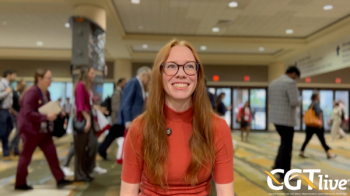
Thomas Crawford, MD, on Taking a Closer Look at Nusinersen Data
The codirector of the MDA Clinic and professor of neurology at Johns Hopkins discussed the updated analyses of the NURTURE study that affected the big picture of the data.
“This really highlights how important [early treatment is] because I have to say, I initially thought that, you know, a month or 2 wouldn't make that much of a difference. Now, it's pretty clear that days make a difference. And that comes through loud and clear on this and some of the other publications that have come out.”
Long term follow-up data and updated analyses from the phase 2 NURTURE study (NCT02386553) have showed that children who received nusinersen before the onset of clinical spinal muscular atrophy (SMA) symptoms continued to maintain and make gains in motor function over 5 years. NURTURE supported the 2016 approval of nusinersen under the name Spinraza (Biogen), which was the first approved disease-modifying treatment for SMA. At the end of follow-up, 23 of 25 children were walking independently and new analyses suggest that early markers of disease activity may be predictors of motor function outcomes including respiratory function, swallowing, and feeding.
CGTLive spoke with Thomas Crawford, MD, investigator on the NURTURE study and codirector, Muscular Dystrophy Association Clinic, and professor of neurology, Johns Hopkins medicine, to learn more about the updated analyses, how certain criteria were borrowed from trials on onasemnogene abeparvovec (Zolgensma; Novartis), and how applying these new criteria in the NURTURE study changed the efficacy profile of nusinersen and allowed more accurate subgroup analyses to be conducted. He touched on 2 measures that were affected by this, Compound Muscle Action Potential and areflexia.
REFERENCE
Crawford TO, Swoboda KJ, De Vivo DC, et al. Continued benefit of nusinersen initiated in the presymptomatic stage of spinal muscular atrophy: 5-year update of the NURTURE study. Muscle Nerve. 2023; 68(2): 157- 170. doi:10.1002/mus.27853
Newsletter
Stay at the forefront of cutting-edge science with CGT—your direct line to expert insights, breakthrough data, and real-time coverage of the latest advancements in cell and gene therapy.
















































